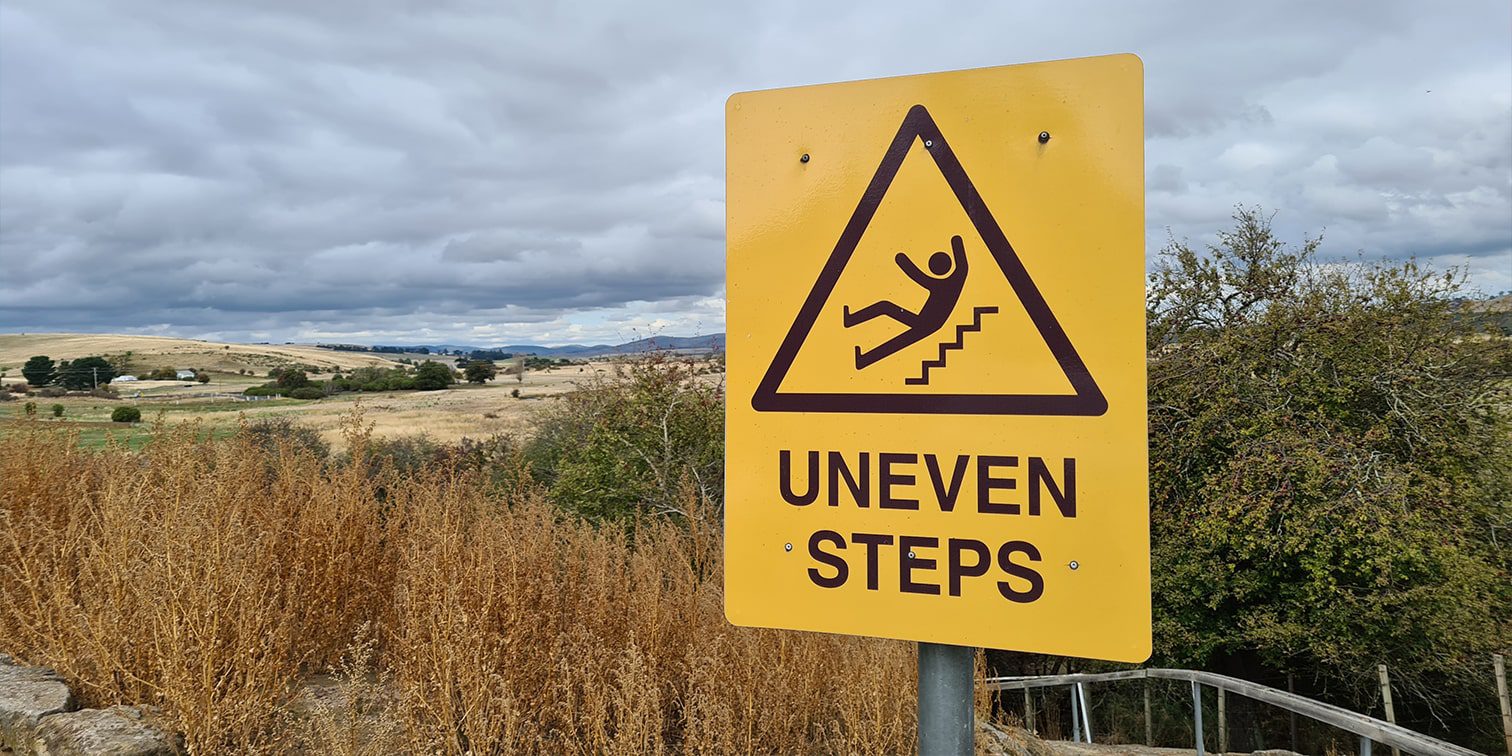Falling is scary. Probably the scariest thing about falling is how common it is. Beginning in childhood, we grow accustomed to falling. Get back up, dust off your pants, and move on with your day. Sure, depending on who is around, it might be a little embarrassing–but no harm, no foul, right?
Wrong. While the average fall is mostly harmless, falls have the potential to be extremely dangerous (and even deadly), especially as we grow older. The National Safety Council reports that falls are one of the top three causes of preventable deaths and account for over one in five preventable deaths. As we grow older, falls become even scarier and more dangerous. 3 million older adults require emergency medical services each year due to a fall.
If you or a loved one has suffered injuries or death as a result of a slip and fall or a trip and fall, it is important that after receiving proper medical attention, you understand the steps you need to take in order to receive fair compensation. For example, you should understand the difference between a slip and fall and a trip and fall, what type of evidence to collect, common lawsuit results, and when to seek out guidance from a qualified personal injury lawyer.
Types of Falls: Slip vs. Trip
While “slip and fall” and “trip and fall” may seem like interchangeable terms, personal injuries attorneys understand that they are actually very different. Understanding the difference between these terms will allow you to collect the appropriate information and proceed with your case correctly.
Defining Slip and Fall
Slip and fall accidents occur directly because of a slippery floor. This differs from trip and fall accidents, which occur due to stumbling on an uneven floor or object. In slip and fall cases, the individual usually slips on a wet surface or ice and falls on their back.
Common injuries sustained from slip and falls include:
- Head injuries to the back of the head, including traumatic brain injuries;
- Neck injuries;
- Spinal cord injuries; and
- Bone fractures
Defining Trip and Fall
A trip and fall occurs when an individual stumbles as a result of their leg or foot colliding with an object or an uneven surface. In slip and fall cases, the individual usually falls face forward. He or she might trip over a large crack in cement or trip over open electrical cables at a store.
Trip and fall injuries can lead to a number of injuries including:
- Head injuries to the front of the head, including traumatic brain injuries;
- Injuries to hands, wrists, or arms from instinctively using these body parts to protect the face;
- Bone fractures; and
- Knee injuries.
Slip, Trips, and Falls Safety and Prevention
Owners of both public and private property hold the responsibility to keep their properties safe and free from dangerous hazards. Both business and private property owners should regularly examine their property and make sure it is free of clutter and cracks in the ground or floor.
Keep floors free from liquid. If there is a spill, clean it up right away. If you cannot immediately tend to the spill, place a sign near the spill and remove the sign once the spill is cleaned up. Promptly attend to any leaks in ceilings. In cold and snowy climates, take measures to limit slippery ice on the ground outside of your property.
Failure to provide adequate lighting is grounds for liability because it is essential in ensuring visitors do not fall on your property. If the lighting at your property is poor, visitors will be more apt to fall, as they are unable to see their general surroundings.
What Should I Do After a Slip and Fall or Trip and Fall?
If you have suffered an injury due to a slip and fall or trip and fall, here is what you should do:
- Seek medical attention. Your number one priority is receiving medical care.
- If you are able to, identify the cause of your fall while waiting for medical attention. Take note of your surroundings. For example, if you fall at a grocery store and notice that the floor is wet from being mopped and there is no “wet floor sign” to be found, this is a problem.
- Gather information from the environment in which your fall occurred. Take photographs or video evidence of the conditions surrounding your fall and collect contact information from any witnesses who may have seen your fall.
- Ask for records. While you are at the hospital, request written documentation of your visit. After receiving medical attention, report your injury to the owner of the property where your injury occurred, ask them to file a report of the incident, and keep a copy for your own records.
- Contact a personal injury attorney.
Average Trip and Fall Lawsuit Settlements
Settlements from trip and fall or slip and fall lawsuits vary. Average settlements for trip and fall lawsuits can range from $10,000 to $60,000. Depending on the case and factors such as the type of injury sustained, how much documentation the injured party was able to provide, and the amount of medical expenses required, settlements can go much higher.
A Trip and Fall Attorney Can Help
Reporting your fall and documenting your injury are crucial steps to achieving a fair settlement, but it is in your best interest to also contact an experienced injury lawyer. We are trained to understand what needs to be done in order to achieve a fair settlement. Let us help you. If you or a loved one suffered a trip and fall or slip and fall injury, contact us to schedule a free consultation.
